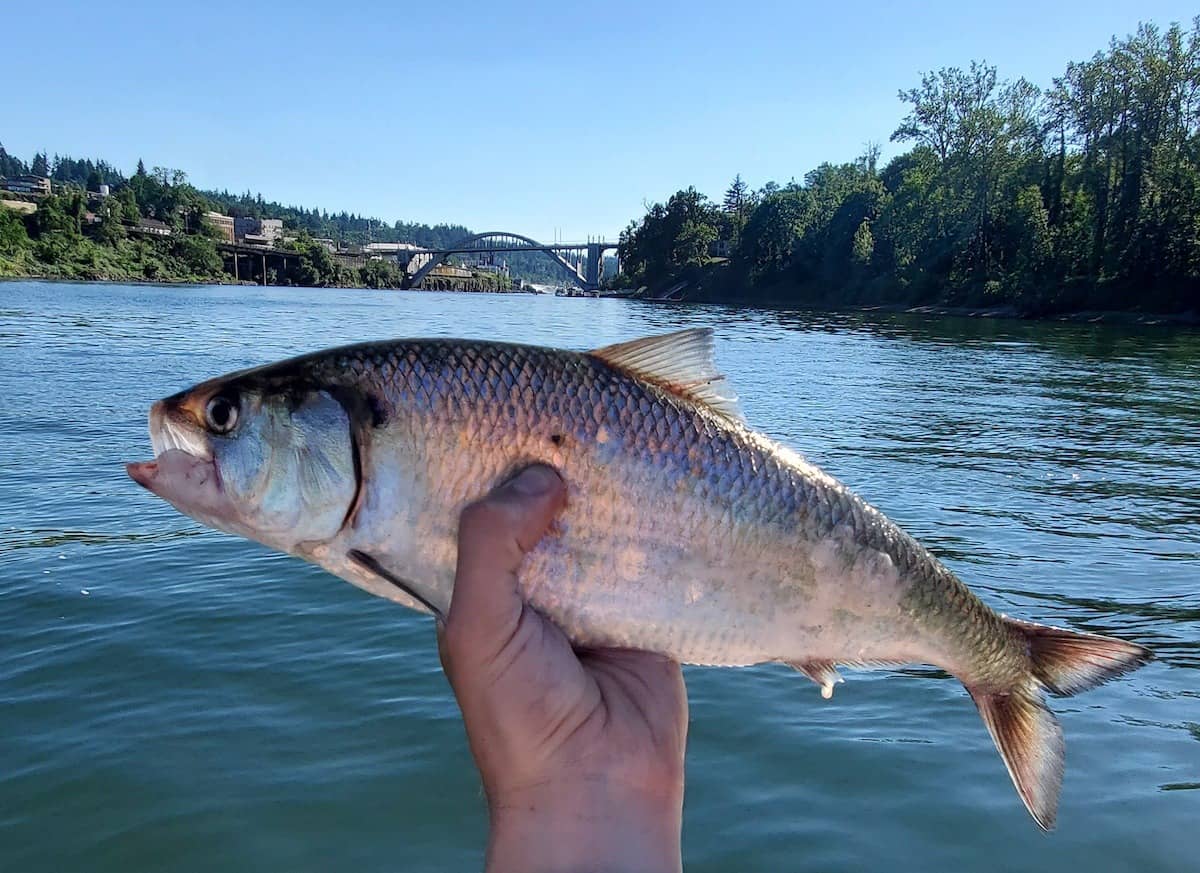Any day now, an American shad that swam up the Columbia River between Oregon and Washington and through the fish ladders at Bonneville Dam will be counted as the number one shad of 2024.
There will likely be 4 million to 5 million (or more) of these strong battlers coming behind that pioneer as the shad migration builds in May, peaks in June, and tapers off into the summer.
Shad will aggressively strike small, bright metallic or colored lures, including small spoons, darts, and crappie jigs. Some anglers even catch them simply with a bare, shiny hook wobbling in the current.
Shad are an incredibly fun and often under-utilized fishery available to anglers on both sides of the Columbia River.
And guess what? There’s no limit!
The 10-year average annual shad count at Bonneville Dam is about 4.5 million, and in recent years, that count has often been above 5 million. Nearly 7.5 million shad climbed the fish ladders in 2019, according to passage data collected by the University of Washington’s Columbia Basin Research program.
That’s not even counting the shad that spawn below the dam, including those that turn up the Willamette River and pass through Portland while heading toward Willamette Falls.
American shad are not native to the West Coast. However, after being transplanted into the Sacramento River from the East Coast more than 150 years ago, they spread northward into the Pacific Northwest and have made themselves right at home.
Besides the huge shad populations spawning in the Columbia and Sacramento rivers and their tributaries, a handful of mid-sized coastal rivers, including Oregon’s Umpqua River, also host very good shad fishing.
Shad will aggressively strike small, bright metallic or colored lures, including small spoons, darts, and crappie jigs. Some anglers even catch them simply with a bare, shiny hook wobbling in the current.
Boat anglers often locate lanes of traveling shad and set an anchor. Once in the right zone, they simply lower their lines into the moving water behind the boat with weight or a diver to get near the bottom and wait for shad to swim upstream.
Anglers can also catch shad from the bank in the Portland-Vancouver area, including at public shore access points just below Bonneville Dam on either side of the Columbia River and at Clackamette Park on the Lower Willamette River.
While many people eat them, shad have lots of small bones and oily flesh that doesn’t appeal to everyone. Some people like to smoke or can shad in similar ways that they prepare herring, which is a related fish.
Other anglers will freeze the shad they catch to save for bait, especially for crabbing at the coast or sturgeon fishing in the Columbia River.
While there are not limits on the number of shad you can harvest, do pay attention to other rules (including in-season updates) that can shut down fishing due to protections for native species including salmon and steelhead.
Generally, it’s legal to fish the Columbia River for shad starting in the second half of May, well ahead of the best fishing that occurs from Memorial Day through the Fourth of July.
For more information on shad fishing in the region, here are a couple of our best resources:

